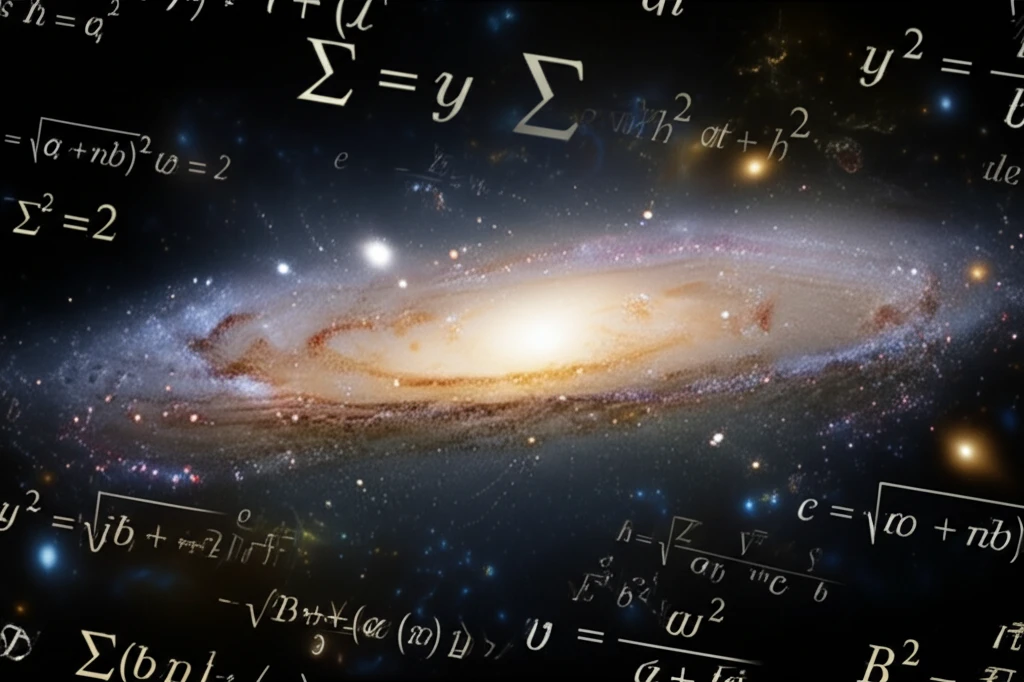
Unlocking the Universe: Can a New Theory Bridge Gravity's Great Divide?
"Explore how the Galilean Gauge Theory is revolutionizing our understanding of gravity by connecting Einstein's relativity with Newton's classical physics."
For centuries, gravity has been understood through two primary lenses: Einstein's General Relativity (GR) and Newton's Law of Universal Gravitation. While GR elegantly describes gravity on a cosmic scale, governing the movements of galaxies and the curvature of spacetime, Newton's law provides an accurate and simpler model for everyday phenomena, such as the apple falling from a tree. However, these two theories, though both successful in their respective domains, have remained fundamentally separate, creating a significant challenge in modern physics.
The quest to reconcile these descriptions has led physicists to explore various geometrical formulations of gravity. Newtonian gravity has seen a resurgence through Newton-Cartan (NC) spacetime theories, aiming to provide a more covariant, or universally applicable, description. More recently, the focus has shifted to coupling field theories with Galilean symmetry to background gravity. This approach has encountered issues, particularly concerning the transformations of the metric (the structure defining distances and angles) and the consistent imposition of a 'flat limit,' where gravity effectively disappears.
In response to these challenges, the Galilean Gauge Theory (GGT) was introduced, offering a systematic method for coupling field theories with non-relativistic gravity. Inspired by Utiyama's approach to gauging the Poincare symmetry (which underlies Einstein’s theory), GGT provides a new framework. Now, new research suggests a direct mapping between GGT and Poincare Gauge Theory (PGT), promising a 'vielbein' approach to Newton's gravity without additional, ad-hoc assumptions. This could redefine how we understand the relationship between classical and relativistic gravity.
Bridging the Divide: Understanding Galilean Gauge Theory (GGT)

The innovative aspect of the Galilean Gauge Theory lies in its capacity to systematically link field theories with non-relativistic gravity. This is achieved through a method inspired by the gauging of Poincare symmetry, which is central to Einstein's theory of relativity. By 'gauging' the extended Galilean symmetries, GGT paves the way to describe gravity in the context of Newton-Cartan spacetime. This approach mirrors how gauging Poincare symmetry in PGT leads to Riemann-Cartan spacetime, offering a parallel structure that simplifies complex gravitational interactions.
- Newton-Cartan (NC) Gravity: An early geometric formulation of Newtonian gravity, offering new insights into Einstein's GTR.
- Galilean Gauge Theory (GGT): A modern approach for coupling field theories with non-relativistic gravity, inspired by Utiyama's Poincare symmetry gauging.
- Poincare Gauge Theory (PGT): The gauging of Poincare symmetry, leading to Riemann-Cartan spacetime, which is central to Einstein’s theory.
- Vielbein Approach: A method used to formulate gravity, providing a basis for connecting GGT and PGT without ad-hoc assumptions.
The Road Ahead: Reconciling Gravity and the Quantum World
The mapping between PGT and GGT opens new avenues for reducing complex dynamics in Riemannian spacetime to simpler forms in NC spacetime, holding significant implications beyond just deriving Newtonian gravity. Any complete dynamics described in Riemann-Cartan spacetime could potentially be simplified to its nonrelativistic form on NC spacetime using the maps developed. Future research will explore the wider applications of this framework, potentially leading to new insights into quantum gravity and the fundamental nature of the universe. This inter-connectivity paves the way for exciting advancements in theoretical physics, offering a more unified understanding of gravity and its interactions with other forces.
